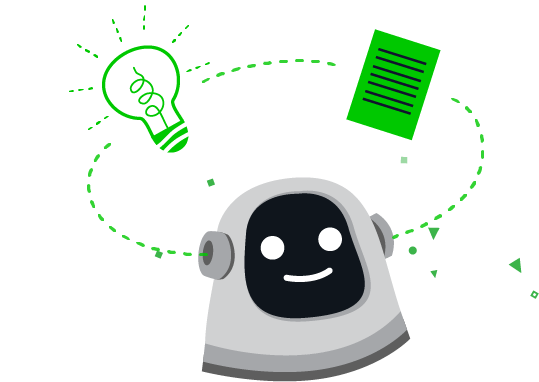Automated news directly to audiences at lightning speed

Our robots analyse structured data – yours or ours – find connections and create quality content at high volume and speed. We then use our smart distribution platform to deliver the right content to the right audience at the right time.


Artificial Intelligence (AI) and Natural Language Generation (NLG)

Our robots use a combination of Artificial Intelligence (AI) and Natural Language Generation (NLG) to produce the texts from structured data sets. Our AI insight engine determines the story, and our NLG application then designs the texts – with possibly different angles depending on target audience. In addition, when a new language version is created we work with editorially trained translators to get the idiomatic expressions correct for e g sports.
We have built a unique news automation platform
Our technology is constructed from a set of key features and built using data science, AI and NLG (Natural Language Generation) – see below.
The United Robots platform was designed to deliver to the key requirements of newsrooms working to journalistic standards:
Predictability. The quality guarantee is built into the technology. With correct data + correct algorithm you always get a correct result. Equally, if something is missed, you can trace the error back, whether it’s a data point or a condition.
Variation. The goal for editorial purposes is to generate a variety of texts. With our dynamic text design tool, we can generate dozens of different texts from the same set of data points.
Control. High end publishers demand full control over the content created.
Our value units
A story – the narrative generated through the data analysis and insights.
A text – the smallest unit of written content we produce. One story can generate many different texts (variation). Several texts can also be compiled into summaries.
Content – we deliver complete pieces of content to our clients, including texts, images, links, metadata etc.
A robot – we’ve built (and continuously develop) one robot for each topic we deliver content about.
Robots – the key features
The story (AI)
The raw material is structured data. For each story, our insight engine analyses data across multiple sources, sources which can be updated at any frequency. The better insights you can build and the more current they are, the more newsworthy the text. Conditions/angles are brainstormed by journalists and set up by developers.
Text design – and predictability (AI + NLG)
We have built a dynamic framework for how texts are designed, a macro planning tool using AI. For each story, the tool is given a set of fixed parameters, such as length, the inclusion of a headline and an intro, which data points to include and how many texts to generate.
Once the parameters are in place, the algorithm is set free to design the texts, dynamically creating text variation within the story scope. In other words, we deliver predictability.
Word, clause and sentence alternatives are written by humans, and data points are inserted (ex of data points include: final score, team names, next game date, etc) – generating thousands of combinations of sentences to create unique, factual articles.
What United Robots do is scale up human writing, rather than build robots that try to mimic human writing.
Our approach enables human-like story writing techniques
- The robot is trained to understand which data points to include in a story, and always works from a set of structured data.
- The robot can consider whether something has already been mentioned in the text, instructing it in how to develop the story.
- The robot can provide texts with different points of view (home team vs away team etc).
- The robot can adjust its writing style and tonality depending on the publisher.
The core content platform sits on a framework of tools developed for media companies
Robot configuration. Function by which the publisher can configure parameters for their robot, such as which teams they focus on in each league they cover, what traffic routes are of particular interest or which celebrities to monitor for house purchases, in order to get the appropriate text version.
Distribution configuration. We are very flexible when integrating with the content management system of the receiver, to follow the tagging and categorisation system needed to put our texts in the right bucket, including for direct publication to sites and apps.
News desk alerts. We can send alerts (via Slack, mail, text message etc) when the robot detects anomalies or outliers in the data which could form the basis for extended stories by the newsroom, e g an all time high price for a sold house in a given neighborhood.
Time management. We can manage different publishing times for different kinds of content as well as updating the actual texts as new data becomes available.
For more details on what makes our tech unique, read CTO Lars Widmark's blog post.
